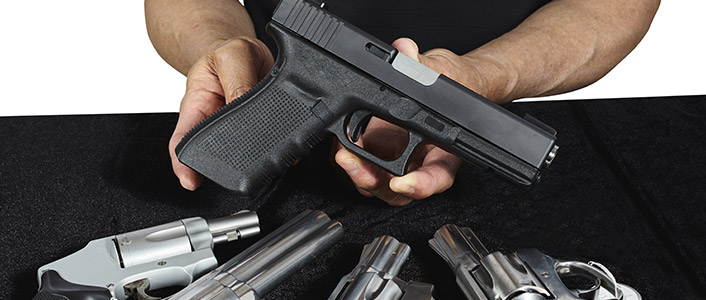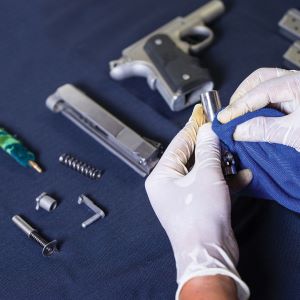
Whether you’re a first-time firearm owner or need a basic refresh on gun cleaning, you’ve come to the right place. Learning how to clean a gun is an important part of becoming a responsible owner, and proper cleaning techniques will preserve your weapon and extend its lifetime of use.
We’ll cover the essential gun cleaning supplies you need to clean a handgun, rifle, or shotgun and give you some pointers on how to properly (and thoroughly) clean your weapon. While there are specific guides out there like How to Clean an AR15 or your Glock pistol, you can apply the knowledge gained from this article and use the instructions in your owner’s manual to clean any type of firearm. With the season of spring in full fling, there’s never been a better time to brush up on your cleaning habits.
Why is Cleaning Your Gun Important?
- Safety
Guns contain tons of small moving parts, and even one dirty component can impact the function of your firearm as a whole. Maintaining a clean weapon ensures your gun fires properly and accurately. A poorly kept gun can impact bullet trajectory and become dangerous to shoot. If you carry for personal defense, you need to be confident your gun will perform at any time.
- Longevity
When you don’t clean your gun after use, residue and moisture can accumulate over time, leading to rust, corrosion, and malfunction. Proper gun cleaning techniques prevent the buildup of contaminants to preserve your weapon’s service life and maintain its performance.
- Learn More About Your Gun
Complete gun cleanings require you to take apart your weapon and reassemble it afterward. You’ll get a closer look at its internal workings, which also gives you a chance to inspect gun parts for damage.
How to Clean a Gun: First Steps
If this is your first time cleaning a weapon, don’t just grab a gun cleaning kit and get to work. This is a gun, not a typical household chore. You must respect your weapon and understand the danger it presents in any situation.
Create a Safe Work Space
If you haven’t already, read up on the 4 Rules of Firearm Safety. The first rule is to treat every gun like it’s loaded. Well, the first rule of gun cleaning is to make sure that your weapon is not loaded. Make sure all magazines are empty and safely perform a chamber check. We also recommend removing all live ammunition from your work area to completely eliminate the possibility of introducing a cartridge to your gun.
As for location, you’ll need to find a clean, well-ventilated area with plenty of lighting. You don’t want gun cleaning chemicals or lead residue to contaminate areas where you eat, and you need adequate ventilation to avoid extended exposure to fumes.
Prepare in Advance
To us, the definition of “irritating” is being halfway through a task and needing to drop everything you’re doing to find a missing item. Avoid this by ensuring you have all of the gun cleaning supplies and tools you need laid out and ready to go ahead of time.
“Ok, but what exactly do we need to clean our guns?”
Glad you asked because now we’ll break down…
What You Need to Clean Your Gun
While your cleaning technique might change with different guns, these 7 gun cleaning supplies are universal and can be used to clean ARs, pistols, shotguns, and other firearms: 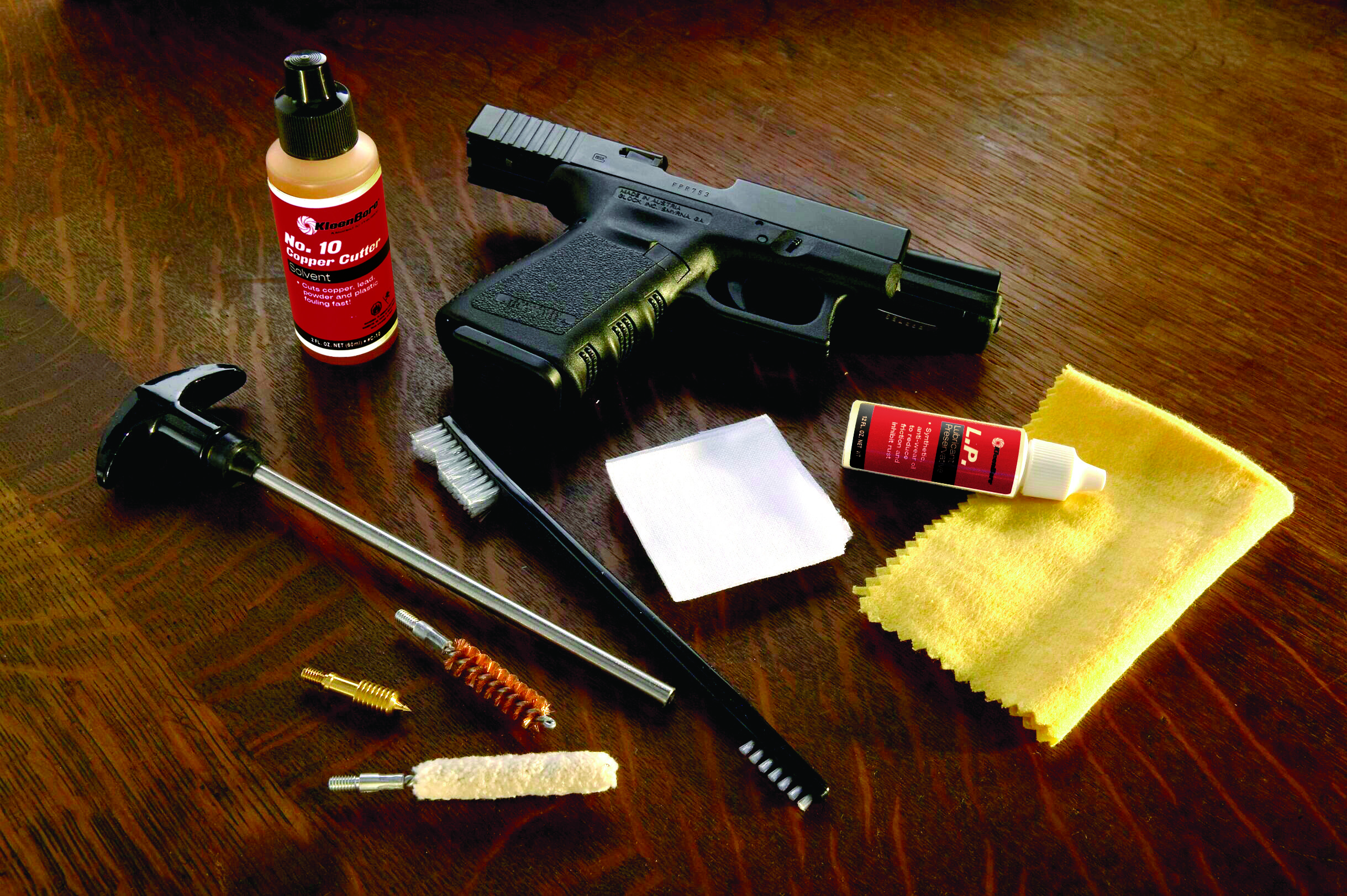
- Cleaning Rod
- Bore Brush
- Jags
- Patches
- “Gun Goo”
- Bore snake
- Gun Utility Brush
To save money and effort, you can buy a gun cleaning kit that contains most, if not all, of these items. There are even caliber-specific gun cleaning kits that include the exact components you will need. If you don’t buy a caliber-specific cleaning kit, make sure to get bore brushes that are designed for your weapon’s caliber.
Beyond the essentials, optional supplies like gun cleaning mats/pads, gun vises, and trays are handy for staying organized and creating an easier cleaning experience. Flashlights are also a good tool to have on hand in case any parts go rolling off the table into the abyss. Some people prefer to wear gloves while cleaning their guns to avoid skin contact with chemicals. Cotton swabs and microfiber cloths are also recommended for applying cleaning oil and other “gun goo.”
How to Clean a Gun: The Basic Steps
As we mentioned before, you should always consult your gun’s manual for any cleaning and maintenance information before diving into the act. Certain techniques vary depending on your gun’s model, but these are some of the fundamental steps for cleaning any type of firearm:
1) Disassemble the Gun
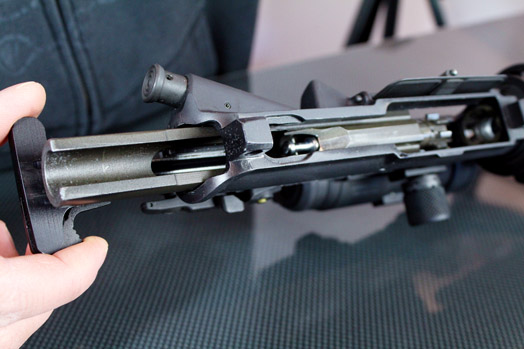
2) Clean the Barrel and Chamber
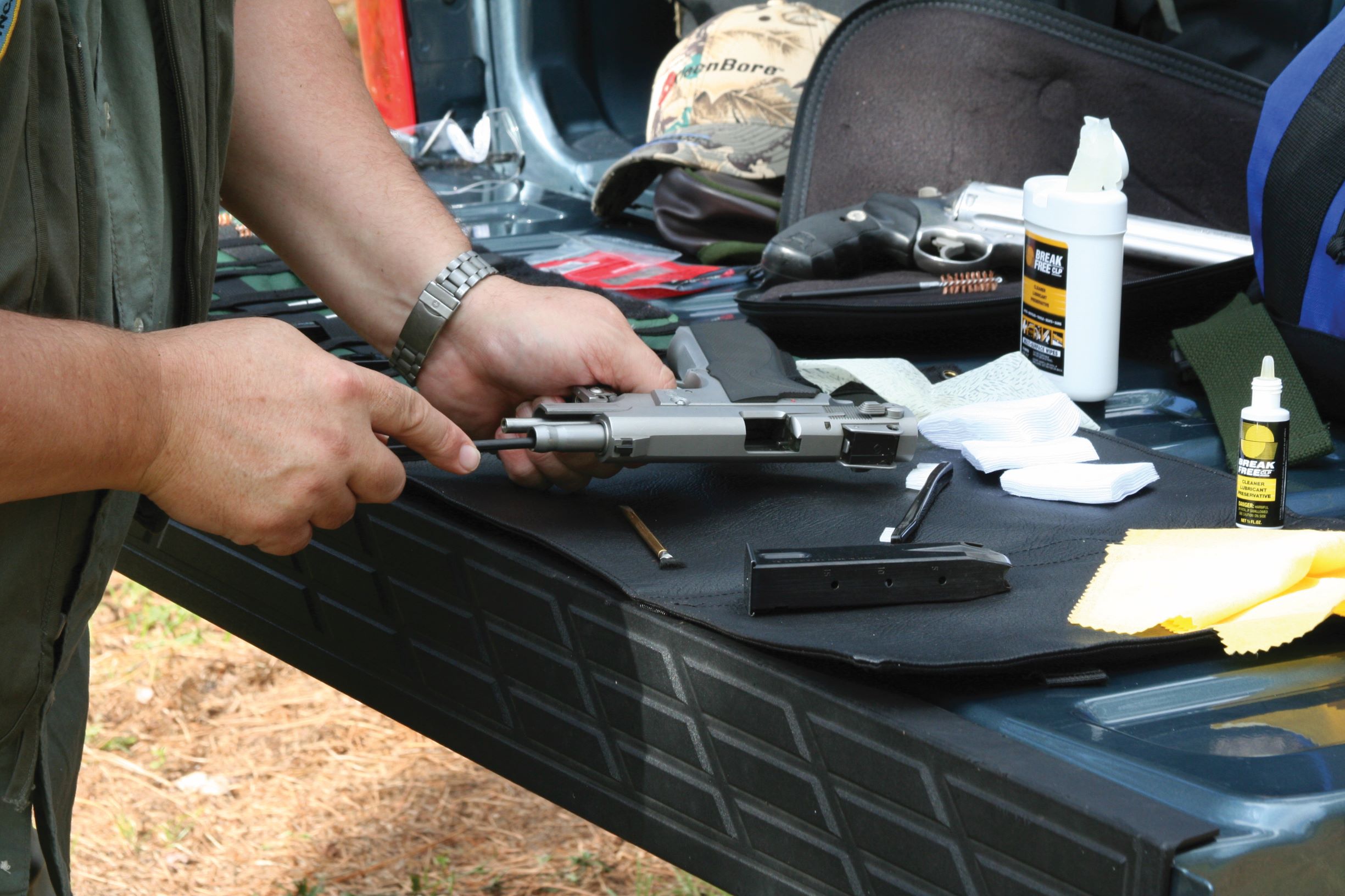
Use a dry bore brush designed for your gun’s caliber and gently brush inside your chamber towards your muzzle. This loosens up any large debris or fouling within.
Then, dip a cleaning patch in solvent and place it on the end of your cleaning rod. Secure the gun patch in place with a caliber-specific jag. Using the rod, push the patch through your barrel until it comes out the other side. Do not pull the rod and patch backward at any point, as this may pull any grime and residue back into the barrel. It should be one continuous motion until the patch comes out at the other end.
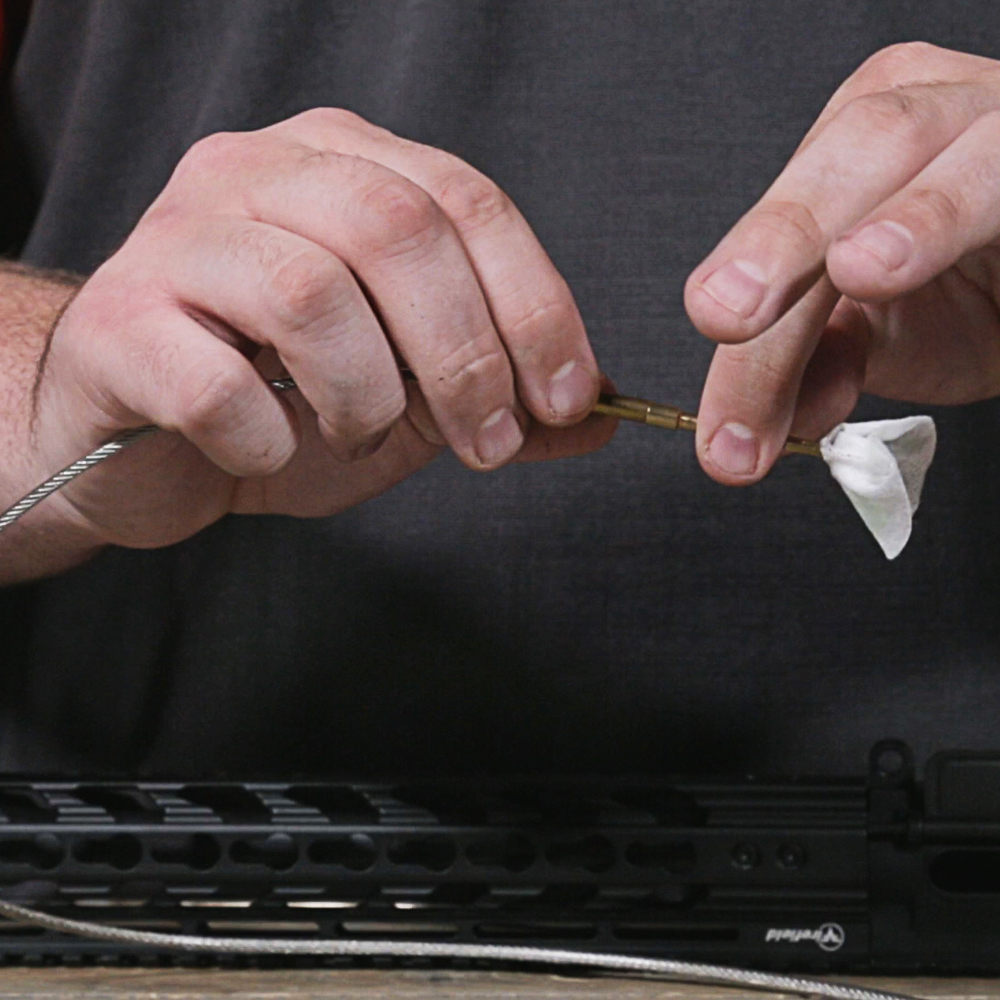
After that, wait around 15 minutes for the solvent to work its magic. This is the perfect opportunity to start cleaning other parts of your firearm.
When 15 minutes is up, you should scrub the inner barrel with a dry bore brush to work in the rest of the solvent. Grab a fresh, dry patch, place a jag on it, and run it through your barrel again (without dipping it in any cleaning oil).
Now it’s time to introduce your gun to the bore snake. Lightly apply gun lubricant on the thickest part of the bore snake and run it through the barrel.
Finally, use your utility brush to wipe away buildup from the barrel’s exterior and other parts that frequently accumulate debris, like the feed ramp.
3) Clean the Action of Your Gun
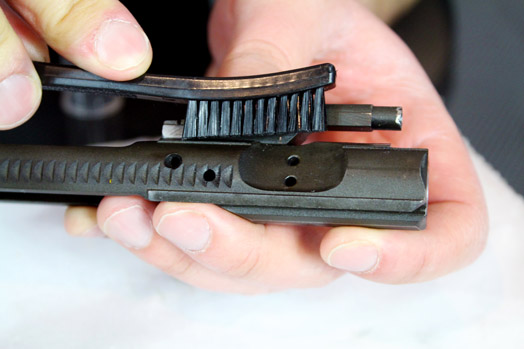
The action of a gun refers to the parts that feed, fire, and eject rounds. This includes slides, trigger groups, bolts, and pumps.
Start by using a dry utility brush to scrub away any dirt or debris you find. If that doesn’t clear all the residue, put some cleaning solvent on a cloth or cotton swab and gently work out those tough fouled areas. Wait about 10 minutes for that to dry before moving onto the next step.
4) Lubricate the Gun
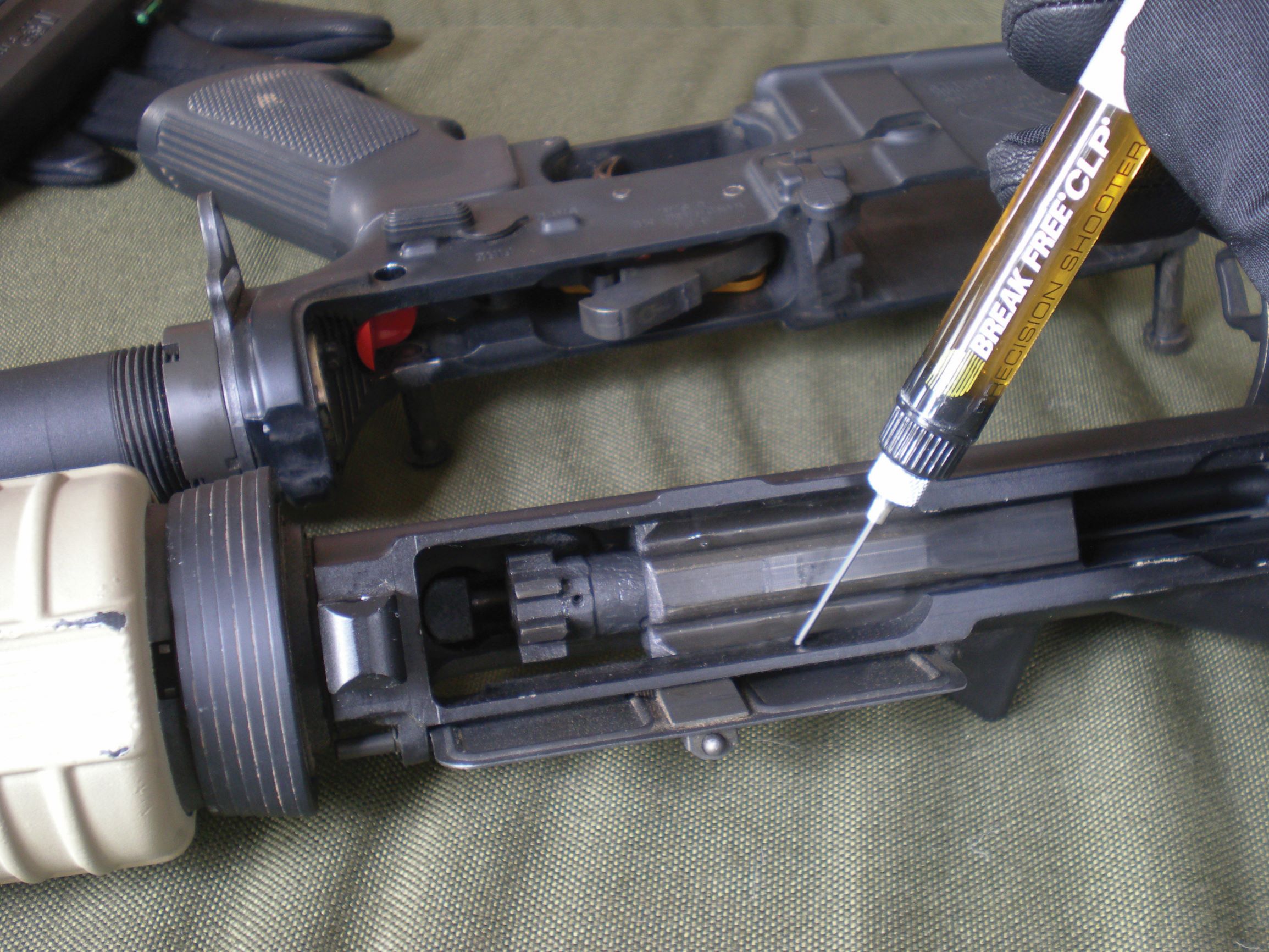
The key to this step is “less is more.” Lubrication helps all of the moving parts within your gun function properly, but too much lubrication can reduce your weapon’s performance.
Your manufacturer’s manual should have recommendations of where to apply lubricant, but if not, common areas include springs, rails, action, slide assembly, and other nooks and crannies within your weapon. Some folks use a needle applicator to apply the lubricant directly, and others prefer to use a cloth or cotton swab. Either method works, but we recommend using a swab or cloth to avoid accidentally over-lubricating your firearm.
5) Reassemble the Gun
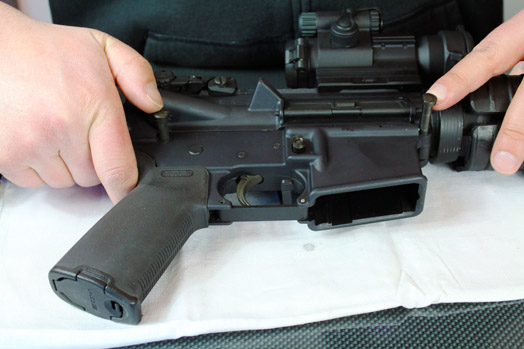
After reassembling your weapon, you’ll need to perform a function check. When taking apart your weapon, there’s always a chance that a component or two aren’t properly aligned. You can perform a function check with simple dry-fire practice techniques to ensure the trigger mechanism, safety, slide, and other essential elements work properly.
How Often Should I Clean My Gun?
Now that you know the basic steps of how to clean a gun, it’s time to address the popular question of frequency. Unfortunately, there isn’t a comprehensive answer to this, as your gun use dictates how often you should clean it. However, a general rule of thumb is to clean your weapon after every 300 rounds fired.
Range Training
We recommend always cleaning your gun after going to the range. Range training involves a lot of shooting, and there are expelled particles and lead that can find their way into those hard-to-reach crevices.
Competitions
If you’re a competitive shooter, whether 3-gun or F-class, you’ll want to clean your gun after every match. A clean, well-maintained firearm will perform at its highest level, which is what you need to keep up with the competition.
Hunting
Unless you have a serious vendetta with the whitetail population, chances are you’re not firing your weapon nearly as much while hunting as you would during target practice or match shooting. That’s why it all comes down to the environment and conditions you hunted in. If you were in muddy areas or hunted in rain or snow, those elements can impact your weapon’s performance. We highly recommend cleaning your weapon after hunting in challenging conditions. If conditions were normal, you don’t need to do a breakdown cleaning of your firearm, but a little exterior touch-up is always nice. When you put your gun away until next season, give it a good cleaning before and after long-term storage.
Everyday Carry (EDC)
For Everyday Carry (EDC) handguns, it all depends on how often you’re firing your weapon and where you are carrying it. If you don’t shoot much or typically carry in clean, dry environments, we recommend doing a full breakdown cleaning once a month. After all, you’re carrying for personal protection, and you want to be confident that your weapon will perform in the direst of situations. This will clear out any lint, debris, or anything else that can accumulate from daily carrying.
A Fresh Start for Your Gun
Your weapon is a valuable item, and it is also a dangerous item when not maintained properly. Show your gun the respect it deserves by thoroughly cleaning it as necessary. Your performance is limited by what your firearm can do, so always make sure you have the best chance to succeed.
You just learned how to clean a gun in 5 simple steps, and we hope you’re ready to take on the task yourself. Shop for gun cleaning supplies at OpticsPlanet today to get all of the tools you need to clean your firearm properly.
- What Is a Red Dot Sight Good For? - August 16, 2021
- What Binocular Magnification Is Best for Hunting? - August 16, 2021
- What Is a Training Knife? - July 23, 2021
Related Posts
« What to Wear on a Hunt: 4 Things to Know About Hunting Clothes How to Practice Shooting at Home: 6 Dry Fire Training Tools »



